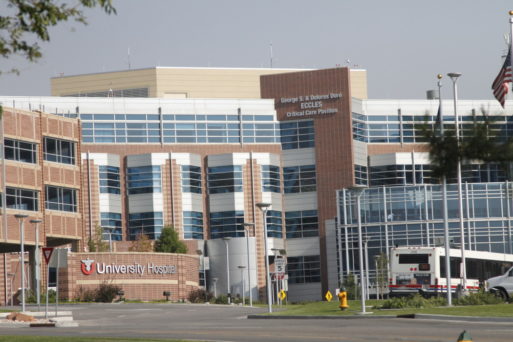To soothe those close to death, the University of Utah Hospital has a No One Dies Alone (NODA) program to ensure all its patients die with at least a friendly acquaintance nearby.
No one should die alone, waiting out their last moments in solitude. The dying process is difficult and frightening for everybody, no matter how prepared we think we may be. That being said, NODA programs benefit patients near end of life who may not have friends or family in the area.

University of Utah Hospital
Credit: dailyutahchronicle.com
The Utah NODA program is comprised of volunteers who are contacted 48 to 72 hours before the patient is expected to die. They sit with and console the dying person in three-hour shifts, providing company and support during this profound time. Volunteers do not know the patients before meeting them.
No One Dies Alone programs exist throughout the country, but the University of Utah Hospital’s is the only location in that state.
The seedling of an idea for a NODA program in Utah sprouted two years ago. Zoe Cross, a medical resident at the time, initiated the notion after she’d been a part of the NODA program at the University of Washington. She shared the idea with Gretchen Case, a professor at the University of Utah’s School of Medicine and now one of the NODA program’s directors.
Case was intrigued right away and, with the help of a hospital chaplain, wrote a project proposal for a NODA program. She submitted it to the Imagine Perfect Care Program through University of Utah Health.
No One Dies Alone received funding from Imagine Perfect Care in May 2017. The program commenced shortly thereafter.
Program Success
Now one year old, the NODA program in Utah has 45 volunteers and is still growing. Volunteers must complete a three-hour training course, learning about death and the dying process.

Credit: healthcare.utah.edu
Brian Zenger, M.D. and Ph.D. student at the University’s School of Medicine, coordinates the program’s volunteers. He helps them to produce an environment of healing as opposed to a curative one. Chaplains and social workers are available to ease the process for volunteers, should they need it.
Zenger believes the volunteers gain great satisfaction from their work.
“The entrance to life and the exit from life has a lot of similarities,” Zenger says. “It’s really an honor to be involved in either one of those situations, and for someone going through the death and dying process, it truly can be beautiful and impactful and very heartwarming to be present for that.”
He believes the program has been a success in its first year and touts its benefits.
“I think every patient we can sit with is a success,” he says. “I think this drives home the university’s initiative to treat every patient as an individual and to care for every single patient in the hospital no matter what situation they’re in.”
No One Dies Alone programs are wonderful additions to any hospital or hospice center. There are those who may not have family or friends nearby to be with them in their final moments. To have someone, even a friendly stranger, with us as we die surely must be more soothing than dying alone.

 No One Dies Alone at University of Utah Hospital
No One Dies Alone at University of Utah Hospital



 “As Tears Go By” by Marianne Faithfull
“As Tears Go By” by Marianne Faithfull
 “The Sea” by John Banville
“The Sea” by John Banville














